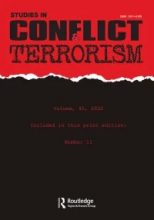This article describes and discusses a comparative semiotic analysis of online text collected from eight extreme right websites and four violent jihadi groups’ online magazines. The two datasets, which comprise just over 1 million words each, were analyzed using LIWC software. The core issues explored were the shared and different linguistic patterns used among extreme right and violent jihadi extremists and the emotional, cognitive, psychological, and social dimensions of the online textual discourses of each ideological grouping and what function these played in their overall political rhetoric. The findings bring to light some nuanced differences and similarities in the cognitive, social, psychological, and temporal dimensions of language used by each. For example, while both types of ideological text showed the same level of certainty in arguments as a cognitive process, the language depicting social and emotional processes, and religion were used more often by the violent jihadi extremists (VJEs) than the extreme right. The findings also point to the fact that VJEs were more likely than right-wing extremists to discuss the future and promise change as motivational incentives.
